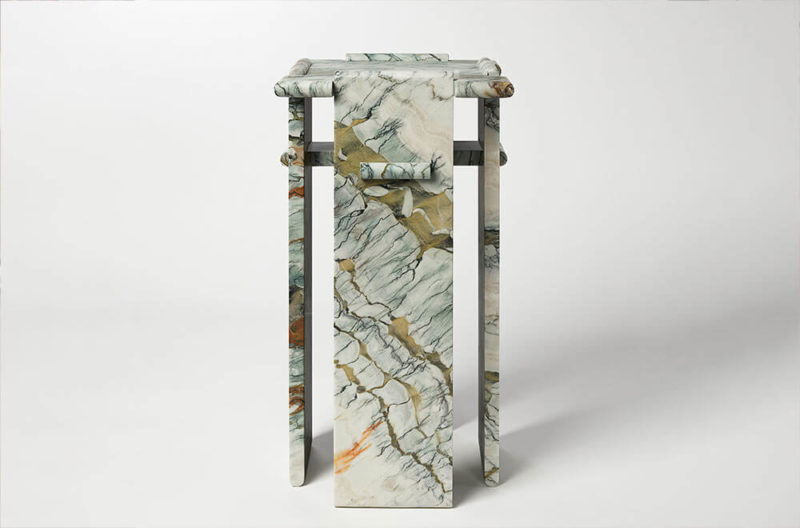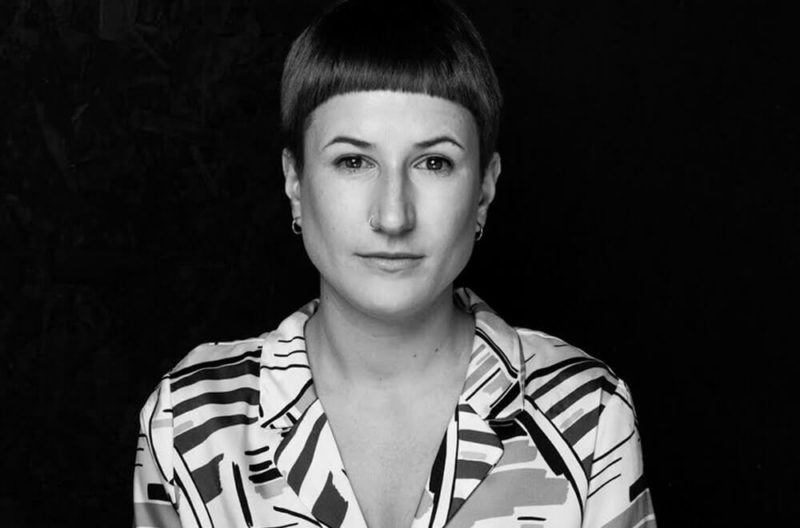Charlotte Perriand: The Modern Life
An exhibition that successfully draws together diverse aspects of the Modernist designer's work and confirms her place in the pantheon of twentieth-century design.
The Design Museum, London
19th June – 5th September 2021

Charlotte Perriand with Le Corbusier holding a plate like a halo, 1928
COURTESY: © ADAGP, Paris and DACS, London 2021 / © ACh
THE MAJOR RETROSPECTIVE on Charlotte Perriand at London’s Design Museum, titled ‘The Modern Life’, successfully advocates for her hallowed place among the most important designers of the twentieth century. The show begins with a mise-en-scène of Perriand’s first major project in her Paris apartment, the ‘Bar sous le toît’ (Bar under the roof, 1927). The bright red tubular swivelling stools and retractable table introduce the visitor to the seamless combination of practical consideration and aesthetic appeal that is so emblematic of her work.

Charlotte Perriand, bookcase for the Maison du Mexique student’s room, 1952
COURTESY: Centre Pompidou, Paris National Museum of Modern Art – Centre for Industrial Creation
From here the exhibition wastes no time in presenting the most recognisable collaboration of Perriand’s career, notably the ‘Chaise longue basculante’ and the ‘Fauteuil Grand Confort’, designed in 1928 with Le Corbusier and Pierre Jeanneret.
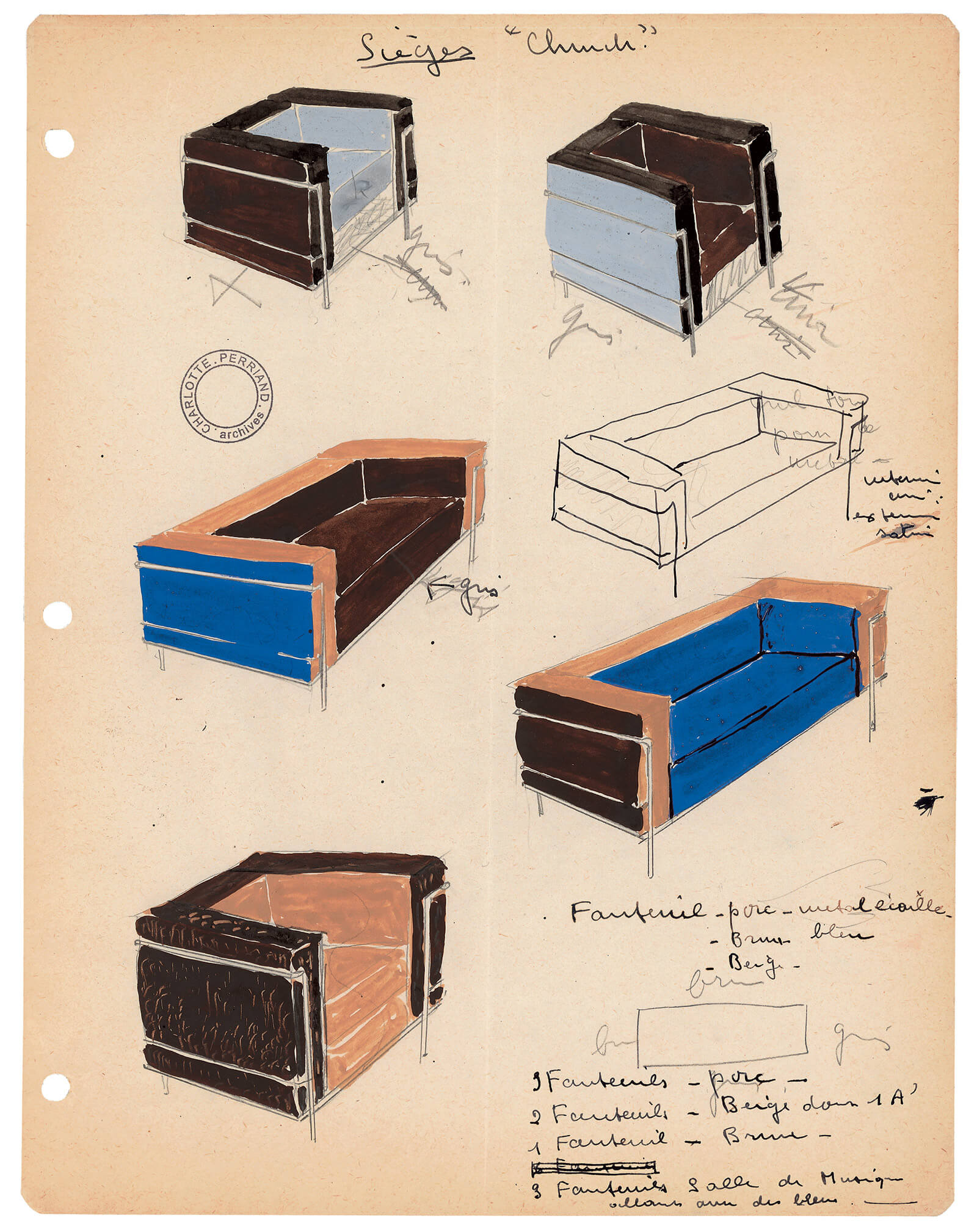
Charlotte Perriand, colour studies of various version of the ‘Fauteuil Grand Confort’ for the Villa Church, 1928
COURTESY: © ADAGP, Paris and DACS, London 2021 / © ACh
In such a large room, the placement of four furniture objects might seem frugal, but the real aim here is to demonstrate the deep practical sensibilities of Perriand. Each piece is backgrounded with a lifesize technical drawing, and the display cabinets show page upon page of sketches and ergonomic studies of the human form. Furniture brochures showing chairs from the nineteenth-century provide a historical base for Perriand’s strikingly modern work, notably the bentwood furniture by Thonet.
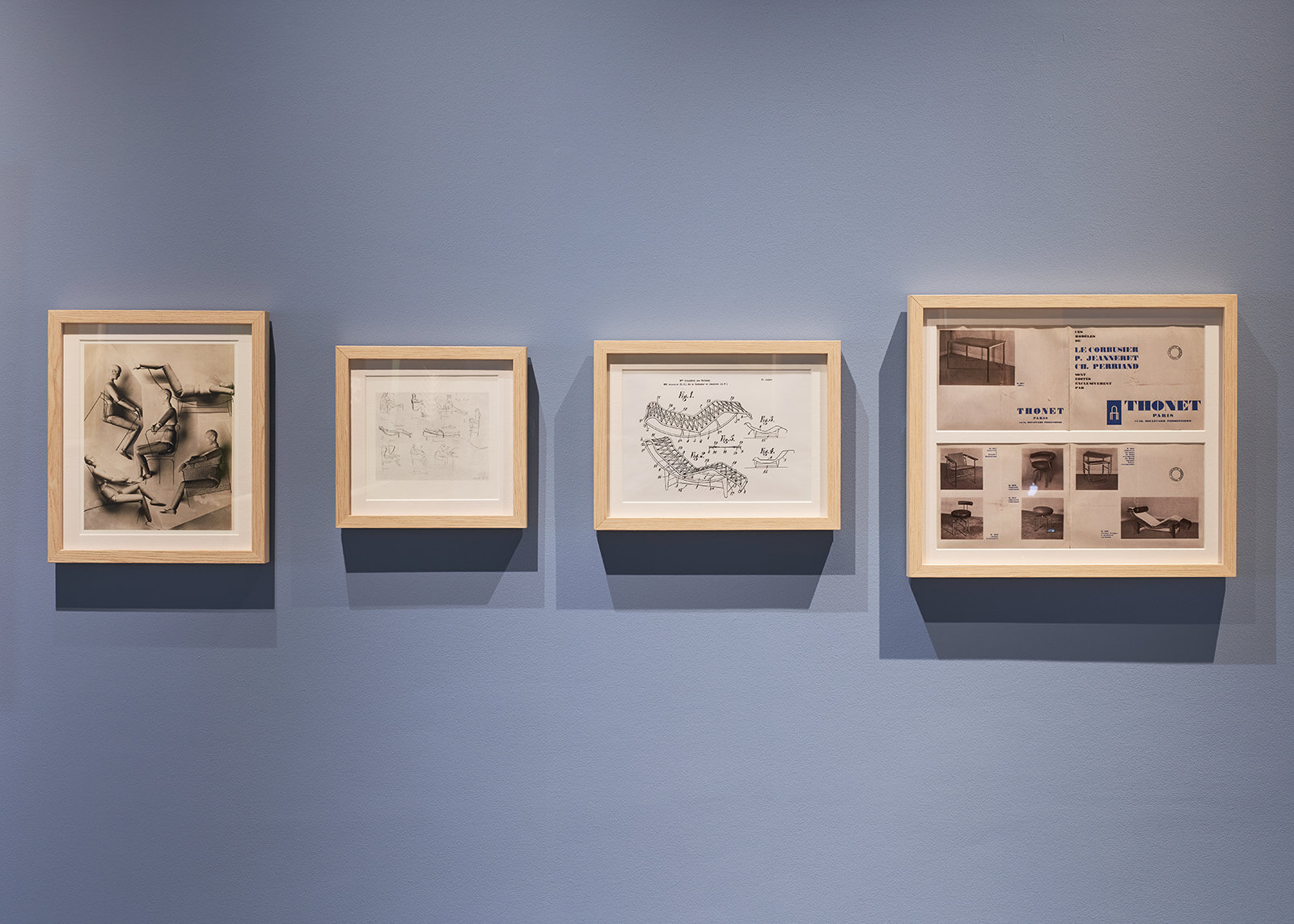
Series of studies for the tubular steel chairs, 1927-29, Le Corbusier, Pierre Jeanneret and Charlotte Perriand and Thonet’s brochure presenting the range, May 1931
COURTESY: Archives Charlotte Perriand
The show’s title, ‘The Modern Life’, becomes increasingly apt as the exhibition progresses and the practical thinking underpinning every piece of furniture and living space that Perriand created is revealed as being central to the timeless aspect of her work. Indeed, the only giveaway that the reconstructed living space of ‘équipement d’intérieur d’une habitation’ dates from 1929 is the kitchen stove.

Charlotte Perriand, recreation of the bedroom and bathroom in ‘Un équipement intérieur d’une habitation’ (Equipment for a dwelling), presented at the Salon d’Automne, 1929
COURTESY: Cassina
The curatorial voice throughout the retrospective leans heavily towards the accessible, with replica chairs by Cassina allowing visitors to experience Perriand’s furniture for themselves. Interestingly, an entire room is dedicated to Perriand’s friendship with Pierre Jeanneret with almost no attention paid to his cousin Le Corbusier’s repeated omission of Perriand’s contributions to his designs. The decision to not engage with recent debates around Le Corbusier’s perceived misogyny reflects a desire to let Perriand’s work speak for itself.

Charlotte Perriand, ‘Travail et Sport’ (Work and Sport) model, 1927–8
COURTESY: Archives Charlotte Perriand
The largest room in the exhibition shows a wide range of her work – from stackable Air France tables, to whorled branches collected on beach walks with Jeanneret – successfully conveying the diversity of Perriand’s oeuvre. Of note are the cantilever bamboo chairs produced for a 1940 trip to present at a salon in Japan, cleverly placed directly opposite the ‘Bar sous le toit’ of 1927.

Photo of the Air France London Agency showing Charlotte Perriand’s large bookshelf room divider, 1957
COURTESY: © ADAGP, Paris and DACS, London 2021 / © ACh
A square-cut hole in the wall between the two acts as a narrative ploy to weave a visual thread between the tubular ‘Machine Age’ chairs of her early career and their reinterpretation in bamboo over a decade later. While at first a little distracting, these holes in the wall are a recurring feature of the show that encourages the visitor to trace underlying themes spanning Perriand’s career. In a sense, this fulfils Perriand’s enduring aim to break up “bourgeois spaces” by making the chronology more fluid.
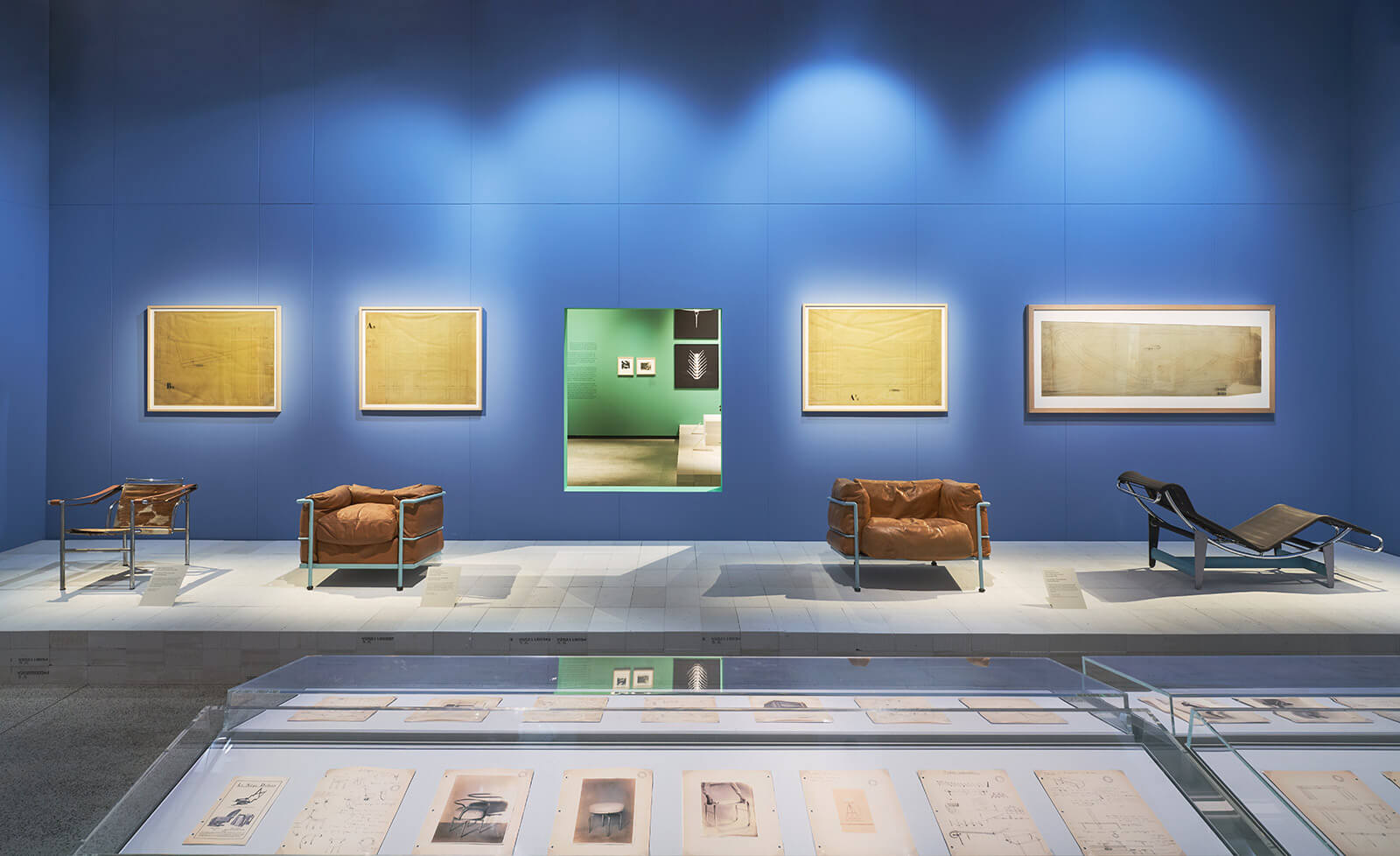
Series of tubular steel furniture with manufacturing plans designed by Le Corbusier, Pierre Jeanneret and Charlotte Perriand
COURTESY: Centre Pompidou, Paris National Museum of Modern Art – Centre for Industrial Creation and Vitra Design Museum
Perriand’s peers are given due mention as well, serving to contextualise her design against the mid-century backdrop. Rectilinear shelving systems made in tandem with Jean Prouvé appear alongside a couple of Isamu Noguchi’s ‘Akari’ lamps that hang quietly next to a monumental tapestry by Le Corbusier. Seeing Perriand’s furniture hold its own against examples by her male contemporaries gives her work the credit it has long deserved and cements her as one of the greats of modern design.

Charlotte Perriand, ‘Maison au bord de l’eau’ (House by the water), perspective rendering of the terrace, 1934
COURTESY: © ADAGP, Paris and DACS, London 2021 / © AChP
The crowning work in Perriand’s career, the alpine residential project of Les Arcs (1968-1979), is the focus of the final room. The prescience of Perriand’s wish to harmonise both built and natural environments speaks directly to contemporary concerns about the relationship between humanity and nature that leaves the visitor in no doubt as to the relevance of Perriand’s remarkable legacy today.

La Cascade residence, Arc 1600, Charlotte Perriand, Gaston Regairaz (architects), Guy Rey-Millet/AAM (site manager), 1967-1969
COURTESY: © AChP/ © ADAGP, Paris and DACS, London 2021
Charlotte Perriand: The Modern Life is showing at The Design Museum, London.




